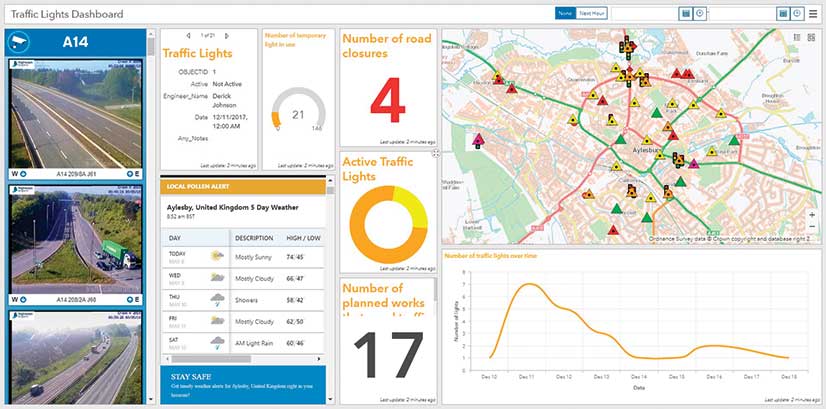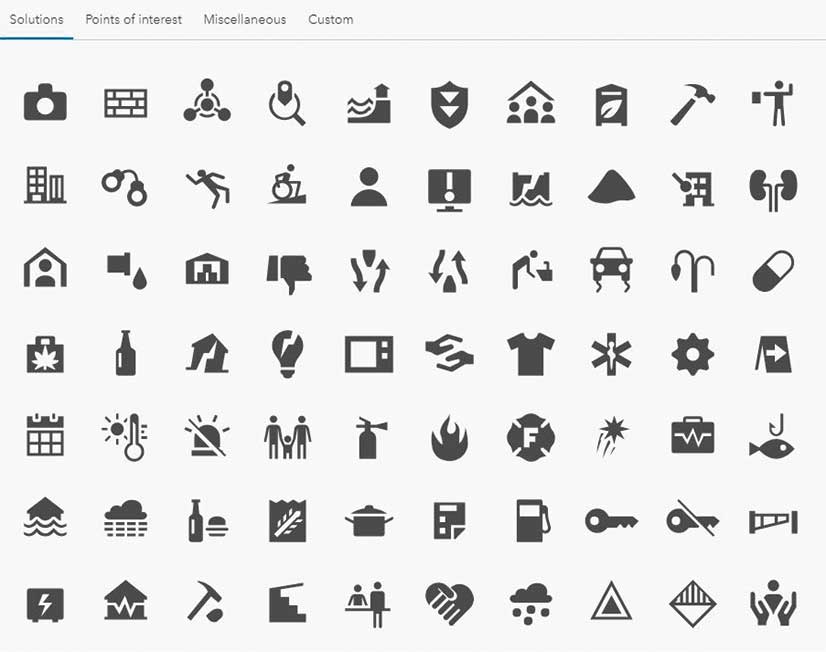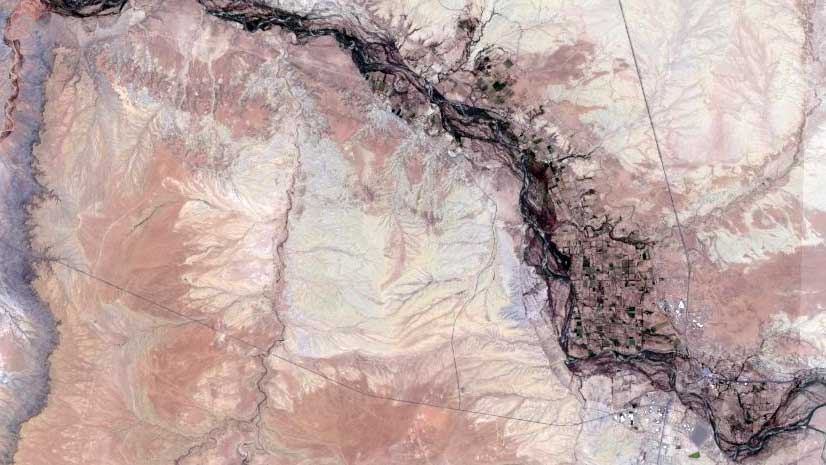Operations Dashboard for ArcGIS now includes features that will make working with the app easier and enhance dashboard information feeds. Operations Dashboard for ArcGIS, a configurable web app included with your ArcGIS Online subscription, provides engaging views of your organization’s data, giving you insights that improve the decision-making process. Here are six of the most useful new features in Operations Dashboard for ArcGIS.
1. Charts Can Trigger Actions
Dashboards are composed of maps, lists, gauges, indicators, charts, and other elements that bring your data to life. These elements inform you when your data changes, but you can also configure them to communicate with each other to improve interactivity through dashboard actions. In addition to maps and selectors, charts can now trigger actions. Selecting a single data point or multiple data points in a pie or serial chart can cause changes in another element such as a map or list.

2. Embedded Content Element Added
The new embedded content element makes it easy to embed documents, images, and videos in your dashboard app. Embedded content can be configured as static with respect to the URL. In that case, all you need to provide is the direct URL. For example, if you want to display weather information, a video from YouTube, or even an app or survey form, simply enter the URL as a document to embed it.
You can also embed content by features. This means that each feature’s attribute information can be used to dynamically construct a URL at run time. This is a terrific way to display content from external web pages that are based on a common key, shared in a feature attribute such as images from closed circuit television (CCTV) cameras. When configured by features, embedded content can be the target of an action such as a selection on a map or list.
3. Feature Mode for Gauges and Indicators
Until now, you could only configure a gauge or indicator to use a fixed summary statistic such as an average or sum. With this release, you can drive the value type, as well as the minimum and maximum values, directly from attributes of a feature.

4. Share Premium Content in Dashboards
ArcGIS comes with ready-to-use map layers that require an organizational account to access. Some subscription content—premium content—consume credits. If you include premium content in your dashboard, you can limit the number of requests the dashboard can receive to manage costs.
5. New Icons
When adding an icon to an indicator or gauge, you will find that Operations Dashboard has more than 100 new icons, and you can still continue to add your own icons. You can also use a scalable vector graphics (SVG) icon as a logo in the header element.

6. NoData Label Is Available
Sometimes your visualization may not have any data to display. This could happen when a visualization is driven by a layer that is currently empty, waiting for data to be added from field apps like Collector for ArcGIS, or when the element is the destination of a selection within another element.
If an element lacks data, Operations Dashboard will display a NoData label. Now you can provide your own custom text that will make sense to your dashboard users. That text could tell users how to populate the element with data.
In addition to these new features, actions are no longer triggered by a button that’s separate from the rest of the configuration experience. Actions are now available in a unified configuration so that they are easier to find and manage.
See the full list of the new features in the web app in What’s new in Operations Dashboard for ArcGIS.

